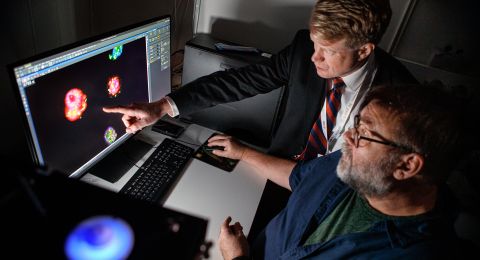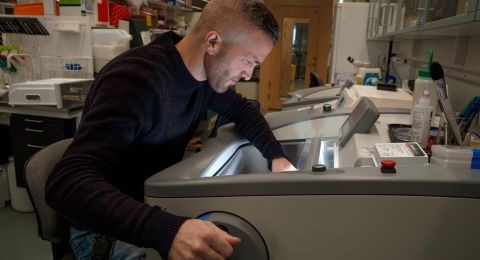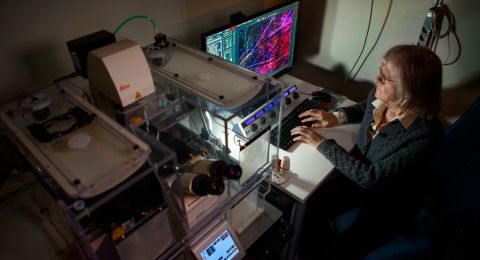
Project Grant 2013
Linking social behavior to the brain
Principal investigator:
David Sumpter, Professor of Mathematics
Co-investigators:
Stockholm University
Niclas Kolm
Uppsala University
Kristiaan Pelckmans
University College London
Judith Mank
Institution:
Uppsala University
Grant in SEK:
SEK 23.1 million over five years
One of the classical hypotheses for why some animals have large brains is that they live in large groups with complex social interaction that requires a strong cognitive ability, i.e. a strong ability to receive process, react to and use information.
“It is an established idea, but it is far from proven. In some animal groups, we find a connection between brain size and group size, but not in other animal groups, explains one of the researchers in the project, Niclas Kolm at Stockholm University.
To test and develop this hypothesis, the researchers are working with guppies. There are several reasons for this choice of model animal. Firstly, guppies have a relatively short generation time; in a laboratory environment, they can have young at three months of age. Secondly, they give birth to live young, which means that they are somewhat like us humans and other higher vertebrates. Thirdly, guppies are a relatively well-studied species and much is therefore already known about the fish’s ecology, evolutionary biology and genetics.
A few years ago, Niclas Kolm began a project to obtain breeding lines, groups of guppies with different sized brains.
“We have allowed individuals with large brains to mate with each other and individuals with small brains to mate. Today, after several guppy generations, we have a difference of 11 percent in brain size. Now, I want to use these guppy lines to test several hypotheses related to the brain’s evolution.
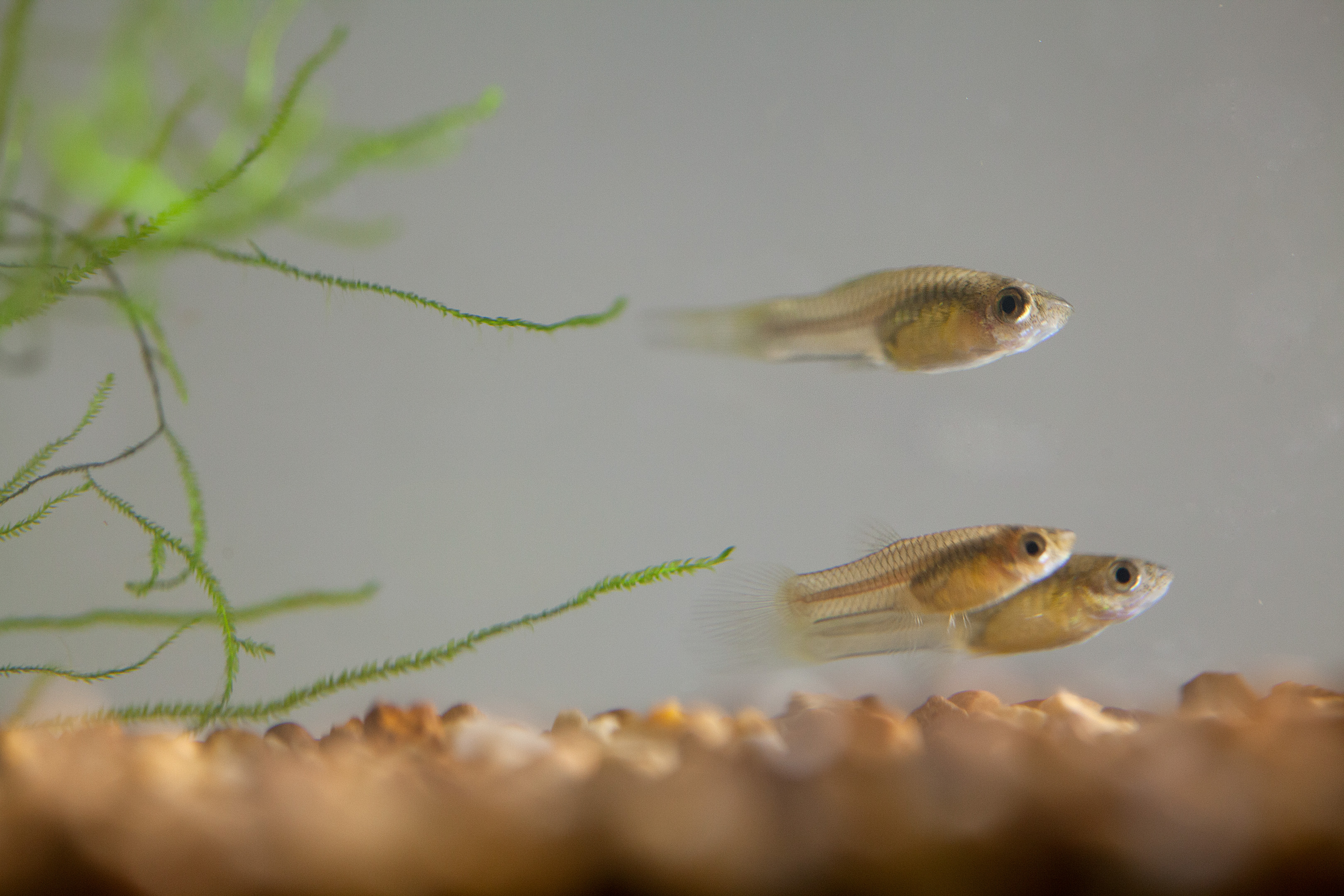
View of evolutionary link
The project objective is to provide a complete view of the evolutionary link between social behavior and development of the brain in vertebrates. The central issue is about what the connection between social behavior and the brain’s shape and function looks like. This question comprises many sub-questions, such as: What is social behavior in fish and can be quantified? How quickly can social behavior evolve? How is the brain’s complexity and function influenced by selection on social ability? What happens with social behavior if the brain’s morphology changes? And what evolutionary costs and cognitive benefits are there in having a brain that can handle more complex social situations?
“In earlier studies, we succeeded in showing benefits and costs of developing a larger brain. We know for example that guppies with large brains are better at finding food and handling predatory fish, but also that they pay a price in the form of a smaller intestinal system and fewer young per brood.
The research team, which will consist of 10-15 people, combines techniques from several different scientific disciplines. Niclas Kolm and his colleagues role in the project is to continue breeding different guppy lines, now also based on social behavior and based on size of different parts of the brain. The project manager David Sumpter, Uppsala University, develops mathematical models that describe how different guppy individuals should move and act in a shoal depending on if they have basic or more advanced cognitive abilities. Then, the mathematical models are tested in experiments on the different guppy lines. The experiments are filmed and Kristiaan Pelckmans, Uppsala University, develops methods to quantify complex social behaviors in large groups of individuals. He also develops the methodology to more quickly analyze detailed brain structures for large test samples with the help of an advanced magnet camera called an MRI scanner.
The Swedish researchers also cooperate with Judith Mank at University College London. Her task is to use genetic methods to map the genetic background of the variations in social behavior and the brain’s morphology that is studied and generated with selection experiments at the guppy lab and in wild populations of guppies.
What to measure?
The project’s major challenge is about the mathematical modeling and how to measure the fish’s social behaviors.
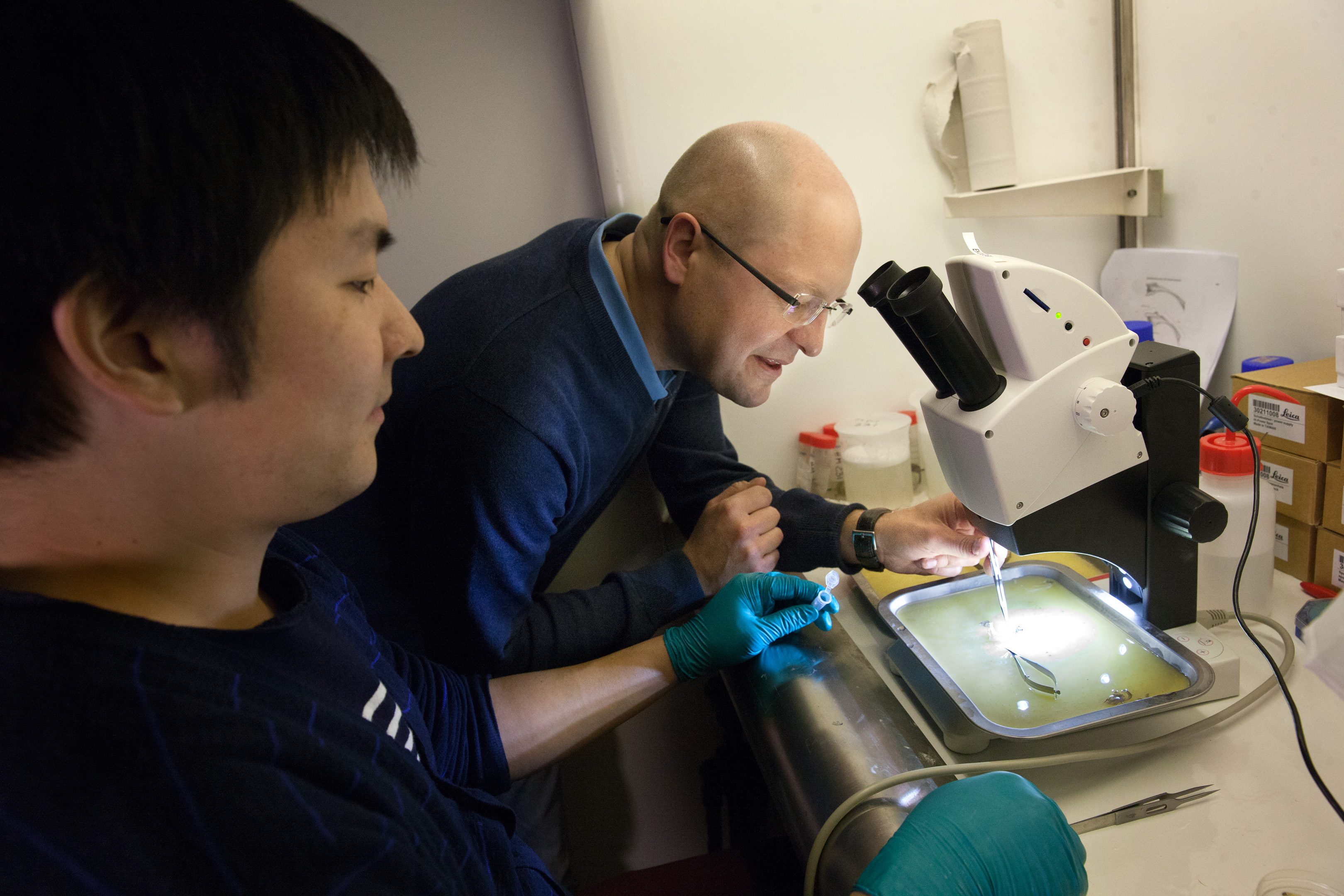
“To begin with, the challenge will be to decide what aspects of behavior to measure. There are an incredible number of variables to keep track of in terms of how an individual in a group relates to other individuals in the group. For example, how does an individual turn in relation to how other individuals in the group turn? What happens with the group when an individual swims slower, faster or stops? What are the rules of motion that individuals use to move together?
The project can on the long term prove important from a social perspective since it can give us new knowledge about our own brain. Moreover, it is also a very stimulating project according to Niclas Kolm.
“Mankind has dealt with the question of the brain’s evolution for hundreds of years. What drives the evolution of the brain is one of the major unsolved problems that remain in evolutionary biology. As a researcher, to have the opportunity to resolve this major problem is naturally very enjoyable. Moreover, it is highly satisfying to be part of such a strong research team that we have succeeded in gathering in this project.”
Text Anders Esselin
Translation Semantix
Photo Magnus Bergström

